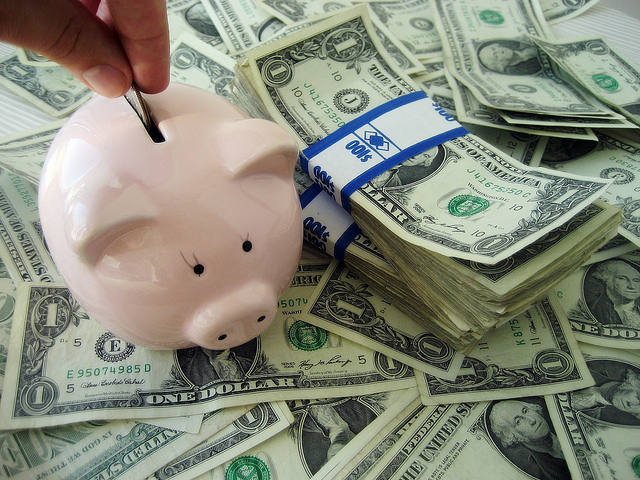
Having some money in savings can be a great way to reduce stress, especially if you are self-employed. A cushion of a few thousand dollars to draw from when you need it can be a lifesaver in the months where you don’t quite make enough to cover your expenses. And it’s always good to have some money set back for emergencies or unforeseen expenses.
Consider different tools for your short, mid, or long term savings to maximize interest earned. Here’s an example of each type of savings and suggested funds.
Short Term – This is money you’ll need in several months, but not so quickly that you’d want to store it in your checking account. Examples: That vacation you’ll take in a few months, new furniture you need, or your upcoming move across town. Access to this money is pretty easy, but the interest earned is low.
I only keep a savings account as a small backup to my checking account. Something like a CapitalOne 360 (formerly ING) Orange account will usually have a higher interest rate than a traditional Savings Account (around .02% last I checked). The Orange account interfaces with your checking account for easy withdrawals/transfers.
Mid Term – This savings is more for things you’ll need the money for in a year or so–like renovating your kitchen or a project you’re eventually launching. You should also store your emergency funds in this type account. This fund may involve jumping though a few hoops to get the money out but with no penalties. It may also have withdrawal minimums or stipulations. Interest is higher than with the short term type savings account discussed earlier.
I recommend a Franklin Templeton Income Fund (class C) in conjunction with a Money Fund. The Money Fund is the one through which you can withdraw money from the Income Fund when needed.
Long Term – This is for money you should not touch until retirement. Early withdrawals will usually involve penalty fees. However, interest here is the highest of all 3. I like the Ivy Fund I have—managed well and it has a good interest rate and performance history.
Meet with (or even better secure the services of) a financial planner for more suggestions and account information. Note: Financial planners usually make money on a small portion of the interest generated by your accounts which the firm is managing, so there’s not a cost to you to use a financial planner.
Always check out your prospective financial planning firm before making investments. Contact the US Securities and Exchange commission (www.sec.gov) to ask about any complaints or legal infractions. Make sure the firms is a member of the SIPC. Get written or emailed confirmations of your transactions. And (if you’re not making deposits directly to the respective fund like I do and you’re doing it through your financial planner) make sure any deposits are made payable to your SIPC member brokerage firm, not to your account exec. (“How Safe Are Your Savings,” by Armond Budish, Family Circle, January 14, 2003.)
What investments have you had good results with?
Don’t miss a thing. Subscribe to receive updates by email.